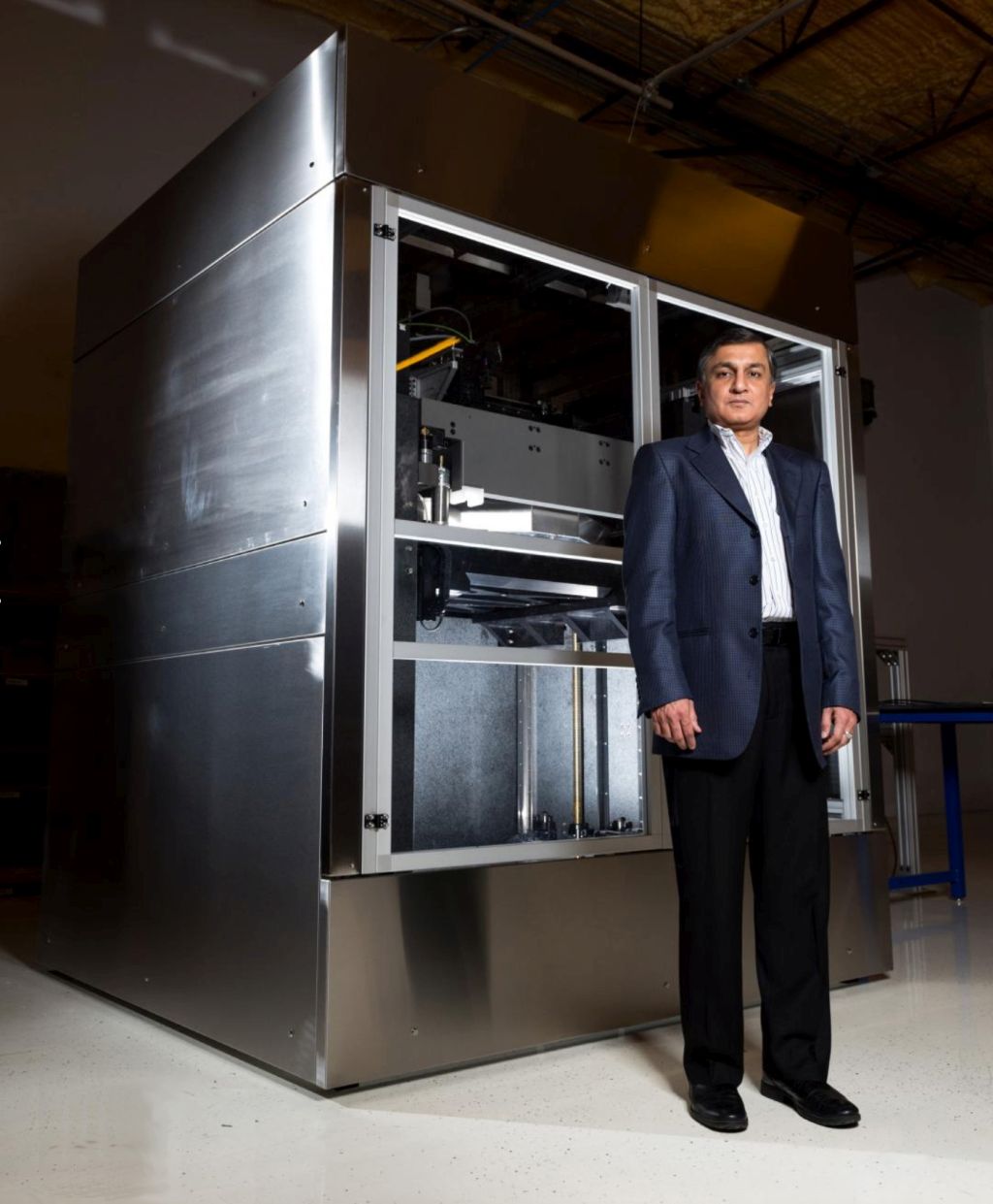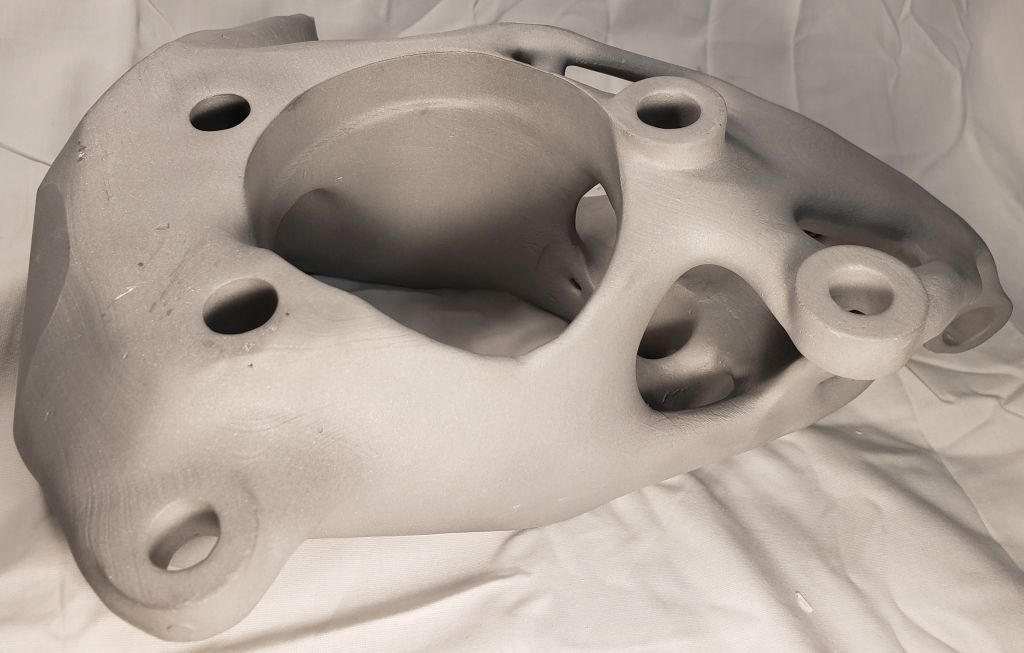From CAD to casting

DDM Digital Foundry combines ceramic 3D printing technology with traditional casting techniques to create high value turbine parts, while reducing both the cost and lead-time to full production. Aerospace Manufacturing reports.
In modern aircraft engines and industrial gas turbines (IGT), investment cast parts are made of expensive superalloys to withstand the extreme thermal, mechanical, and chemical loads experienced by these hot gas path components. For decades, these high value parts have been made through a labour-intensive, multi-step lost-wax investment casting process. This approach requires twelve separate steps to produce finished castings. Given the time and investment, many turbine OEMs avoid design changes once a part is in production.
Now, a new category of ‘digital foundry’ technology significantly cuts lead-times and costs when creating the complex parts found in jet engines and IGT turbines. The modern process delivers the convenience and speed of ceramic 3D printing to create the moulds, with the precision of investment casting. The solution is ideal for turbine parts due to the feature resolution, overall build level, and ability to produce parts at production volumes.
Compared to traditional investment casting, the technology can lower the cost of manufacturing parts by over 50% and decrease lead-times for new or modified parts by a factor of ten. The more complex the part, the greater the reduction in cost and lead-time since it is very difficult to produce complex geometries with traditional tool and die methods in the lost-wax investment casting process.
Investment in precision
The technology can produce precision investment castings of complex engineered components without any up-front investment in hard tooling and without any patterns using 3D printed ceramic shell moulds. The fully automated, digital printing technology is engineered to produce parts that are equivalent to those using traditional investment casting in properties, surface finish, and dimensional accuracy.

The global investment casting market size was estimated at US$20.99 billion in 2020 and expected to reach US$31.07bn by 2027 according to Research and Markets, a global market research provider with 450+ of the Fortune 500 clients. As drivers of growth, the research firm cites rising demand from the aerospace and defence industry, the use of investment casting in the automotive and transportation industry to develop advanced components, and increasing application in industrial machinery.
In the US, the National Science and Technology Council (NSTC) of the Executive Office recently released an updated list of Critical and Emerging Technologies significant to national security that includes advanced gas turbine engine technologies. The NSTC is a cabinet-level council of advisers to the President on science and technology.
However, one challenge to the expected growth of the investment casting market has been the high fixed costs of traditional part design and development.
“Today, the overriding goal of aircraft jet engine and IGT manufacturers is to continue to seek new ways to incrementally increase turbine efficiency,” says Suman Das, founder and CEO of DDM Systems, an Atlanta, Georgia-based manufacturer of complex metal components for diverse industries. “However, even large OEMs are wary of designing new parts that require an investment of millions of dollars for new tooling when a part is unproven.”
Ready to pour
The company’s Digital Foundry can produce optimised, 3D-printed ‘ready to pour’ ceramic shells based on more than twenty-five patents covering equipment and methods in half a dozen countries. Once the moulds are created, traditional investment casting techniques are used to create parts in production quantities.
“The first step is to take a customer-supplied CAD model of a casting and use it to design, and then 3D print ceramic shells with integrated cores that are ‘ready to pour’,” explains Das. “There is no up-front investment in hard tooling and no patterns are required. The shells are poured utilising the usual investment casting methods with unprecedented speed and precision in production volumes.”

The process used to create the ceramic shell is called Large Area Maskless Photopolymerisation (LAMP). The technology uses a ceramic resin that is cured with UV light to produce shell moulds with integrated cores, layer-by-layer. In LAMP, the 3D ‘printer head’ projects images in ultra-violet light onto the resin, causing it to solidify in patterns corresponding to slices of the shell.
The ceramic structures that result can achieve the high level of detail expected of investment casting cores and moulds. Once the ceramic shells are printed, they must go through a thermal processing step using well-established techniques for firing ceramics. DDM possesses trade secrets related to the ceramic formulation and firing.
According to Das, there is significant reduction in costs since the LAMP process eliminates seven of the twelve steps typically required to produce a traditional investment casting shell. These seven steps account for 90% of all the sources of scrap and approximately one-third of the total manufacturing cost of producing an investment casting. With the 3D printing technology, the ceramic shell is made in a single step.
The LAMP machine has an adjustable build platform that can be configured to 600mm x 600mm x 500mm for production scale. This is the largest print platform with the finest feature resolution available in the industry for ceramic 3D printing utilising UV-cured resins.
With this approach, a Digital Foundry can respond quickly to part design changes or begin casting new parts in as little as ten days. At a traditional investment casting foundry, the lead-time for first parts can take up to 52 to 80 weeks for the most sophisticated, high-performance castings.
The wait is over
By eliminating much of the cost and time, jet engine and IGT turbine manufacturers can cast a range of design variants to conduct qualification and ‘rainbow wheel’ tests to optimise the design of blades, inlet guide vanes (IGVs), housings, shafts, and other hot gas path parts.
The printed ceramic shell is compatible with all air-melt and vacuum-melt foundry processes. So, OEMs that operate their own investment casting foundries can install DDM Digital Foundry to create the moulds and do the casting with existing equipment. Third-party foundries can do the same, with a relatively modest investment to immediately increase capacity, speed production, and reduce lead-times.
DDM has completed third-party qualification with castings made in over half a dozen alloys poured in foundries across the US. These meet all the required criteria for acceptability as published by the Investment Casting Institute.
Today, the digital foundry process can produce parts in hundreds of standard air-melt steel, aluminium and vacuum-melt nickel alloys. Air-melt alloys currently qualified include stainless steel 304, 316, 17-4 PH, 15-5 PH, and austenitic steel CF3M (wrought equivalent SS316); S7 tool steel; aluminium A356 and A357; and air-melt Inconel 625. Vacuum-melt alloys currently qualified include IN 718, IN 713LC, Rene 141, and CMSX-4.
Although the conventional lost-wax investment casting process has been used for decades, foundries that take advantage of digital foundry technology will have a competitive edge in meeting the increasing demand for complex parts with minimal cost and lead-time.











